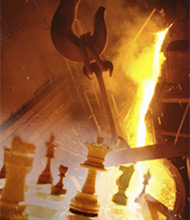But it will be hard for China to gain significant leverage by buying stakes in resource companies in Australia. For one thing, according to Marius Kloppers, CEO of BHP Billiton, even the biggest shareholder might not get a seat on the company board. “According to BHP regulations, directors are selected to the board according to their industry experience, not the number of shares they hold,” he stated.
Looking for more insights?
Sign up to stay informed about our latest article releases.



